Welcome to a new issue of the Journal of Runic Studies, the premier Malkioni publication for studies into the nature of Glorantha. If you haven’t subscribed yet, please consult with the spirit bound to the appropriate electronic page.
This week we enabled the ability for people to comment on our blog posts, which includes podcast episodes and Journal of Runic Studies issues. This is an experiment, and it may or may not feature some occasional comment from Joerg himself when he wants to voice a disagreement with me or finds the need to correct my superficial lore knowledge. Anyway, come say hello!
God Learner Sorcery
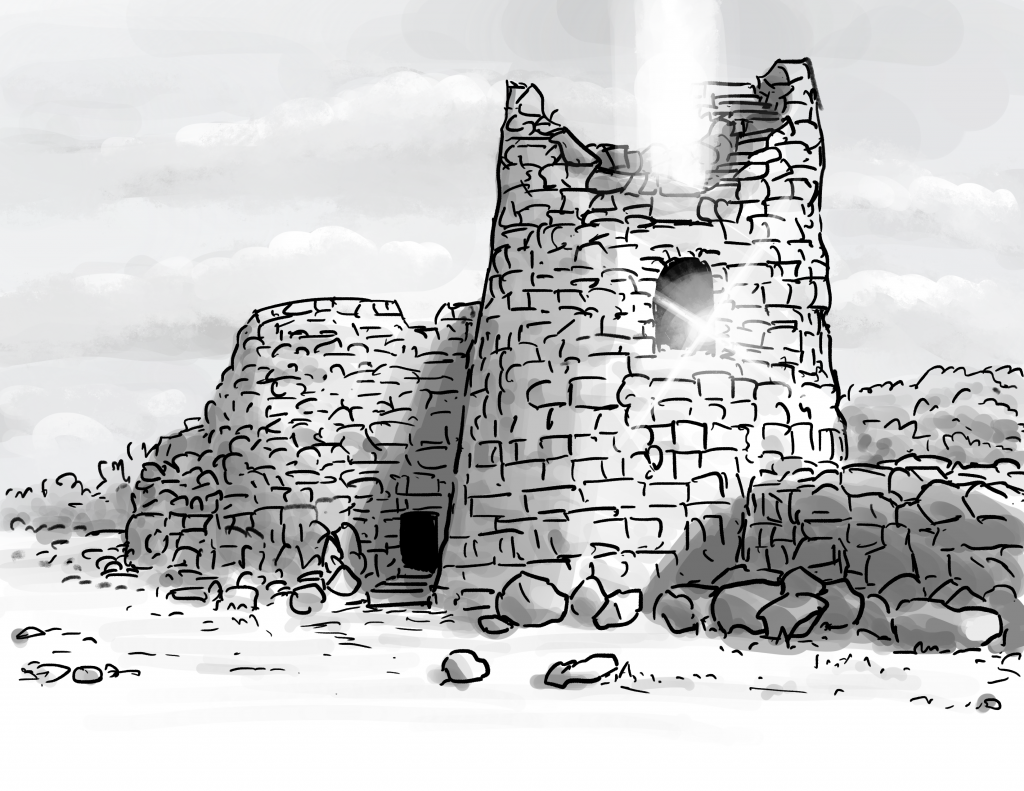
Here is what us God Learners were up to this week.
Found Document: Voralan Stories

We found some bad elf jokes in our archives… apparently written by a bored scribe. Check them out!
Chaosium News

Here are this week’s Chaosium news!
More of Rick’s RuneQuest Miniature Collection
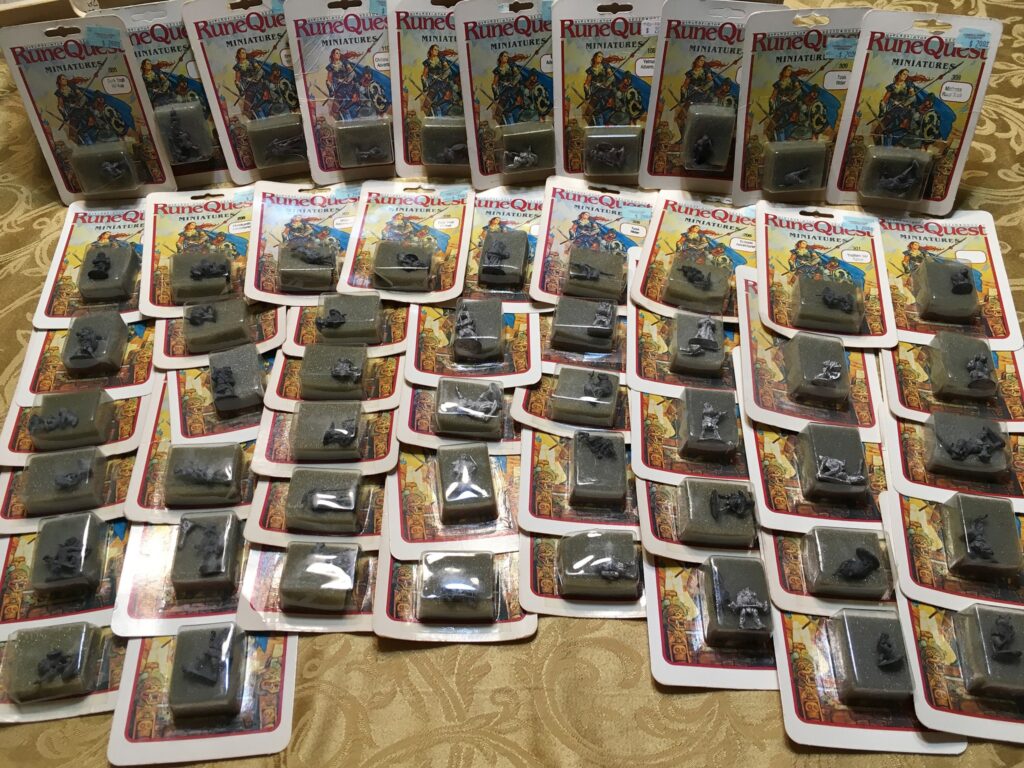
There’s another “Out of the Suitcase” article on Chaosium’s blog! And like the last one, it’s about old RuneQuest miniatures.
Chessex just happens to be based in Ft. Wayne too, and their HQ is only about 10 minutes from our hotel. My colleague Dustin and I decided to just swing by see if Don was in the office and luckily he was, and he graciously took the time to give us the 10 cent tour.
Don’s history with Chaosium goes back to almost the beginning, back to when he worked at Games of Berkeley. That’s the company that became the importer of Citadel’s range of minis for RuneQuest in the early 1980s, which I talked about in my previous post.
The article will tell you the value of keeping old product catalogues around!
Reminder About The Well of Daliath

This is a regular reminder for any newcomers that Chaosium’s Well of Daliath is an amazing source of material for RuneQuest and Glorantha, from old archived posts from bygone eras of the internet to official errata and Q&A for RuneQuest Glorantha, from a frighteningly long Prosopaedia to an incredibly useful timeline of Dragon Pass.
Recently I found myself checking back on some of the Q&A, in particular this long list of answers to common questions about the Summons of Evil, which is bound to be very confusing to any Gloranthan newcomer (as it was for me).
What is Evil?
I think I had missed this interview between James and Jeff last week. Jeff goes over the basics of “evil” in TTRPGs. I don’t think there’s anything you educated and refined folks wouldn’t know there, but you can definitely send this video to any friend who is still killing goblins without remorse in their D&D game.
Jonstown Compendium

The Jonstown Compendium is Chaosium’s community content program for all Gloranthan games, hosted on DriveThruRPG. Disclaimer: all the relevant links are affiliate links that hopefully will let us cover some of the hosting and maintenance costs for the website and podcast! Thanks for using them!
The Seven Tailed Wolf in Print
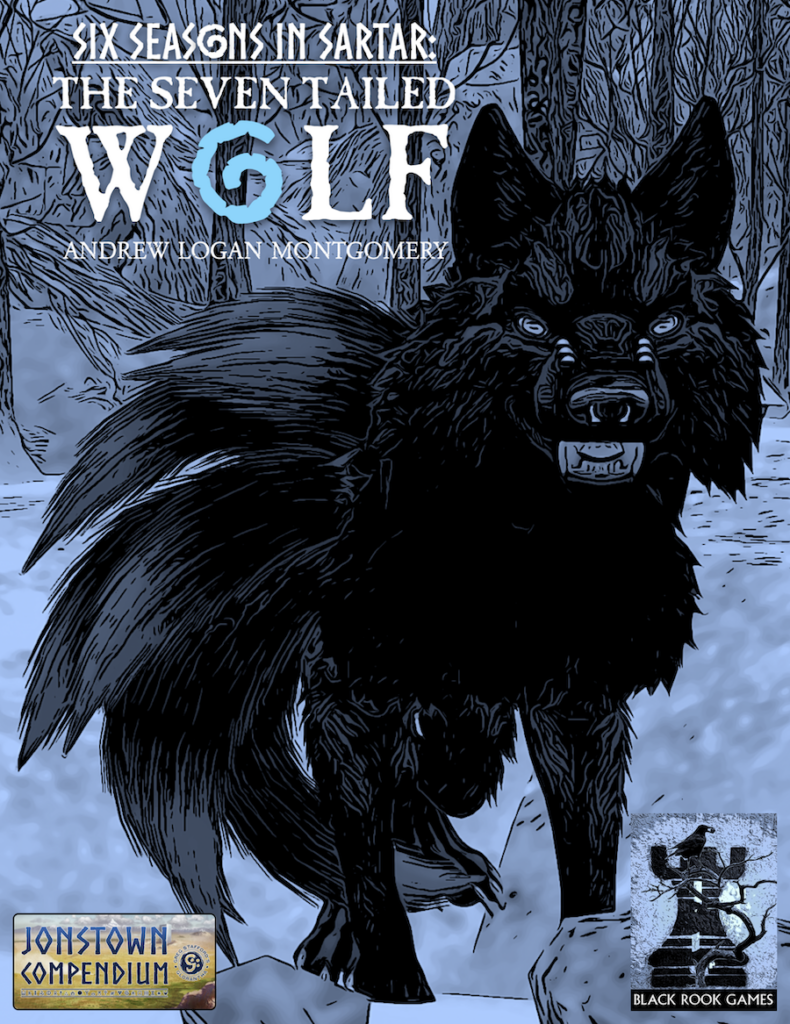
Andrew Logan Montgomery’s already best-selling third volume in the Haraborn saga is now available in print! Get it here.
Jeff’s Notes

Jeff Richard, the current mastermind on everything Gloranthan at Chaosium, is often posting notes and thoughts on the RuneQuest Facebook group. Here’s our curated list from the past week. A partial archive of these sources is compiled on the Well of Daliath.
Mythical Synthesis and Pantheon Equivalencies
While working on their mythical synthesis, the God Learners built up equivalencies between the pantheons they were familiar with (Theyalan, Dara Happan) and those they encountered during their travels. Jeff offers the main two of those: Pamaltelan Equivalencies and Kralorelan Equivalencies.
They’re basically lists of correspondences between central Genertelan deities and Pamaltelan/Kralorelan deities. I don’t have a clue about these other pantheons so I’m mostly looking at the lists and thinking “yeah, those are funny looking names“. So you’re not going to get any commentary from me (as Joerg for that!) But if you’re going to send your players to the south or the east, that might be a good quick way to grasp who’s doing what in these strange lands.
More interestingly (to me at least), Jeff clarified what the God Learners were really up to when they were cataloguing and identifying all these gods:
Remember their goal is pragmatic. Get it right and they can magically master the world. Get it wrong and everything sinks under the waves.
And so for the God Learners (unlike modern academics) all the incentives are to get something that works. Like being able to figure out there must be a God of Fire that Burns on Water and then summoning it to wipe out a hostile navy.
This reminds me of Dmitri Mendeleev, who created one of the early versions of the periodic table of elements. Because he found some meaning and logic between chemical elements, he was able to not only correct some previously incorrect properties about known elements, but also predict three yet-to-be-discovered elements.
So the God Learners might have been able to do the same. They might have been able to look at your local deity and tell you “actually, she’s called XYZ and she can do this other thing you didn’t know about“. And, as Jeff says, they were able to predict the existence of forgotten deities, and go in the Hero Plane to find them. That’s science, kids!
The Grand Ritual of the Third Council
This note is interesting, and not just because it has a map in it! It deals with the Third Council (during the 9th century) and the “Grand Ritual” that sunk them, like a Kickstarter campaign that blows up and destroys your company (it basically led to the end of the Second Age, but that’s another story).
This ritual was going to require massive amounts of magical energy over several generations, and by the end the Third Council members requested people to worship them directly to increase that energy. That didn’t go well. But what caught my eye is the other requirement for the ritual:
The Grand Ritual had countless components and requirements. Among them was the presence of Golden Age beings that predated the separation of Beast and Man – such things as horse-people, bull-people, fox-people, and bird-people. As such liminal creatures did not exist in Dragon Pass, they needed to be made and so the Third Council did just that. The infamous Stitched Zoo is where these unfortunates resided until it was time for them to take their place in the Grand Ritual.
Many people are reading this and going “that’s where the ducks come from!”. Frankly? We’ll never truly know. But what mostly came to my mind was how that ties nicely with what we were talking about in our latest episode on the Tusk Riders. After all, one origin story for them is some sort of cross-breeding and gene-splicing program between the boar-riding tribe of the Aramites and some unspecified group of trolls.
Anyway, we know that this Stitched Zoo is where the Beast People come from.
The infamous Stitched Zoo was outside of Voss Vairanu.
You’ll find Voss Vairanu near the centre of the map below… if you match that to present-day Dragon Pass, you’ll find that it’s smack in the middle of Beast Valley.
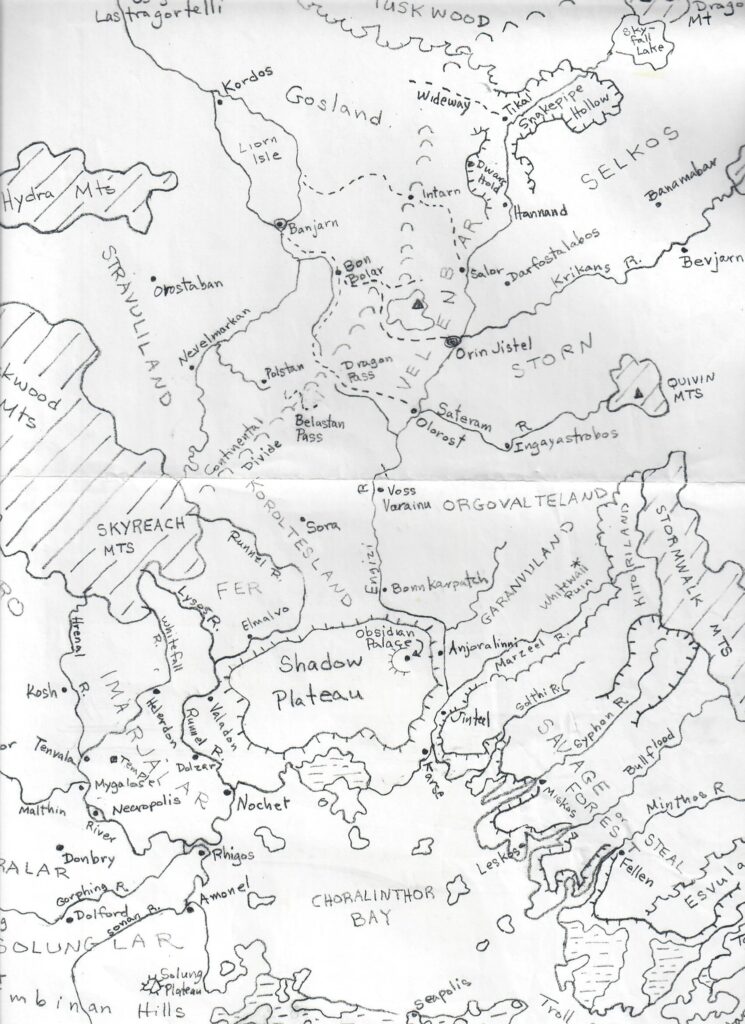
King of Sartar’s Internal Monomyth
A BRP Central thread about the wives and children of Argrath was going into various speculations based on King of Sartar. But given the book’s narrative premise (that of a historical research into Glorantha’s Third Age based on unreliable found documents), there is quite some room for interpretation.
However, Chaosium is also working on an actual campaign book for RuneQuest that features many events alluded to in King of Sartar. This means removing the ambiguities and providing gamemasters with actual facts. As Jeff says:
And please people, Greg and I did develop an internal “monomyth” for King of Sartar, so we could determine which stories were false and which stories would be used in the RQ campaign. For “King of Sartar” as a literary device, we could keep all sorts of questions open, but to create something like the Great Argrath Campaign, certain questions needed to be answered so that this could be run as a game (as Greg did for Pendragon).
It’s interesting that Jeff and Greg did settle all those questions ahead of time. I half expected that King of Sartar had deliberately ambiguous material even to its authors.
Questions on HeroQuesting
Another BRP Central thread on heroquesting prompted Jeff to answer a few basic questions about another thing that confuses newcomers easily.
The first notable thing is that heroquesting doesn’t necessarily include any re-enactment of myths (or “deity LARP’ing” as we sometimes call it). Jeff defines it as any activity during which the characters interact with the God Time on the Hero Plane. He adds:
As an aside, most heroquests are not about changing reality, or rewriting major myths – for what it is worth, I find such heroquests are not all that interesting. They are about discovering something new – in the mythology or in the characters themselves. Here’s a really basic one:
The Earth priestesses are all in a worry this year as the winter solstice has passed and the Grain Goddess has still not begun to awaken. If she does not return, there will be no spring planting, let alone a fall harvest. Everyone is worried. Omens and divinations are taken, and it seems she is trapped in the Underworld by a “Demon Lord with a Bone of Power”.
The Earth Priestess writes names of those in the local community on shards of pottery and puts them in a cauldron. She picks them out in a ceremony attended by all- it is your characters who are named! She says that you all must enter the Smoking Cave (located near the Cinder Pits) and descend deep within until you pass out of this world. She gives you an emerald crystal with two powers – it is a spell reinforcing crystal of 4 points, and it glows brighter when held in the direction of the Grain Goddess!
When I started playing in Glorantha around 2019-or-so I was wondering how heroquesting was different (or not) from “going to weird places” in other games. For instance, in Call of Cthulhu, most adventures happen on Earth, but every now and then there’s a scenario for which you need to go through a portal to R’lyeh, summon some weird beasts to fly to Carcosa, or take some drugs to enter the Dreamlands. It felt to me like heroquesting was a bit similar, only you go to the magical eternal land of gods instead. And so I didn’t really understand the point of the whole “re-enactment” stuff from older HeroWars/HeroQuest material… It sounds like I was on the right track.
Note that bits of these BRP Central posts have been archived on the Well of Daliath.
Who Were the “Syndics”?
Out in Western Genertela there’s this ongoing thing called “The Syndics’ Ban”, which has effectively split the land into isolated bits of reality that can’t communicate with the rest of the world. But who are the “Syndics”?
David Scott has an answer, which Jeff says “has far more truth in it than [any] previous speculation“:
The phrase appears in Wycliffe Ballads, a long piece of biographical poetry:
Quick! burn all such books and papers
As might aid the Syndic’s ban,
Which you find within my chambers :”
Thus the hurried message ran.I never asked Greg about this, so it amuses me to think he read this and just noted it down as a cool thing to use at some point.
The Syndic’s Ban (singular, belonging to the syndic) as it appeared in Greg’s typed notes also appears later as Syndics Ban (just plural), it appears to have lost it’s apostrophe completely in the Guide.
The syndic of the poem controlled the Sorbonne and had the king’s ear, so going back to a singular Syndic, I think it was the High priest of the God of the Silver Feet, backed by what remained of the cult. (syndic as religious controller).
The God of the Silver Feet is, of course, the deity that was slain by Prince Snodal of Loskalm and his posse of heroquesters. Given that it was the Fronelan god of communication, it, well, killed all communication in the land. Good job Prince Snodal!
Miscellaneous Notes
There were a lot of notes last week so here are a bunch I don’t have time to comment much on:
- Crimson Bat Ecology: I think I missed this last week, but this includes some numbers for how many people need to be fed to the Bat! It comes up to about 100 people a week, which means the Lunars need to move the Bat around while also keeping a bunch of prisoners and criminals on hand for sacrifice.
- The Conquest of Teshnos and Kralori: a Second Age document that tells the conquest of Teshnos and Kralorela by the God Learners. I tend to gloss over this kind of old lore that my players and their characters won’t really care about, but hey, there’s a cool magical amulet to control dragons, and nobody knows where it is now… soooo….
- Malkionism and Sorcery: some thoughts about Malkionism, Malkioni society, Plato’s Republic, and sorcery in Lhankor Mhy’s cult, among other things.
- Talastar: some population and area numbers about Talastar, the Orlanthi buffer between the Lunar Heartlands and a bunch of nasty things like the Chaos-infested lands of Dorastor. When you look at the Guide’s map, you see mostly a few Lunar cities and a whole bunch of forested area, but given the numbers I would argue that there are probably a fair number of towns with similar sizes to Herongreen and Dangerford (both of which get a dot on the Guide’s maps). This should be your reminder that you can always colour between the lines of the Guide, because the Guide leaves you a fair amount of space!
- Heler: the Rain God is quite underrated when you consider how important rain is to everybody, the fact that he’s the grand-father of all Water Elementals, and the great grand-father of Malkion! Jeff gives a few reasons why he’s “of great cosmological importance, if little cult importance“.
- Other Campaign Settings: some ideas for RuneQuest campaigns that don’t take place in Dragon Pass or Prax.
- Kallyr Rocks: some bit of discussion from Discord about Kallyr and how she’s an interesting character because she’s flawed and controversial in the setting.
- Aranwyth Tribe: a small snippet of text from the upcoming Dragon Pass Gazetteer.
- Torkani Tribe: a bigger snippet of text, this time about the Torkani tribe. This also includes a clan map!
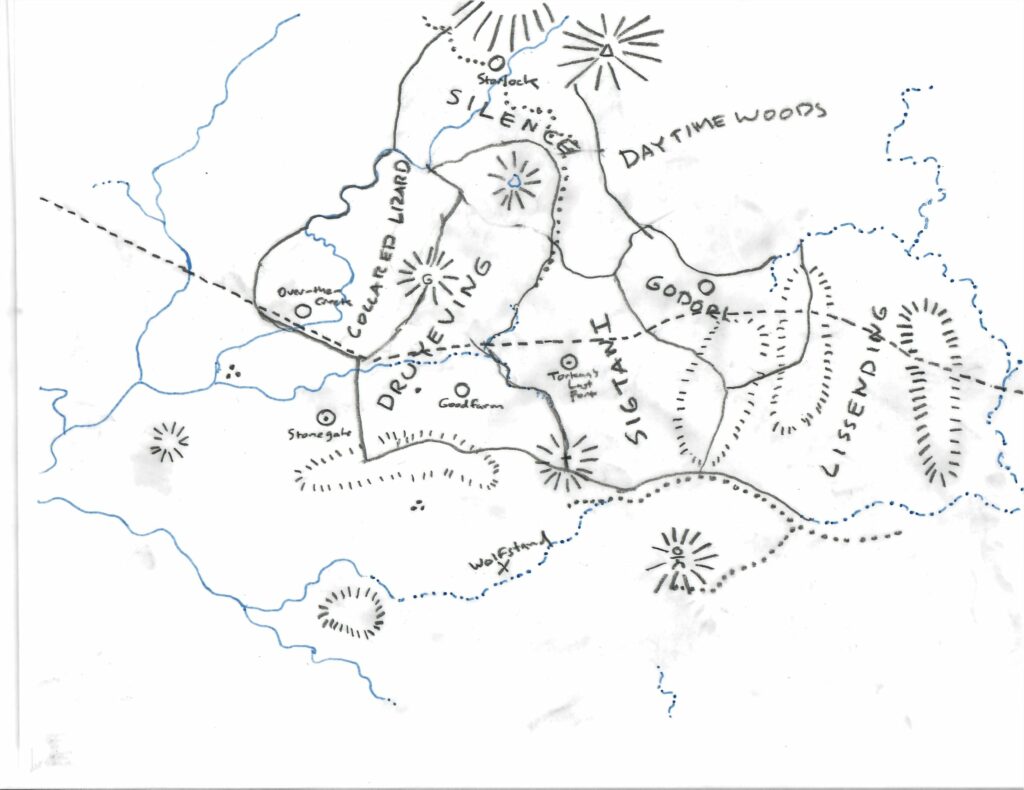
Community Roundup
The community roundup is our highlight of interesting things being mentioned in the Glorantha-related Facebook groups, sub-Reddits, and other similar online places.
Runeblogger Reviews Sandheart

Jon Webb’s (and friends’) wonderful Praxian police procedural campaign is getting reviewed by Runeblogger here.
It is clear a lot of love has been put into this book, with excellent art, maps, and all you need to start playing adventures in Sun County. It is no surprise it has become a Gold Best-Seller. I hope also GMs new to RuneQuest like the book enough to run a campaign in Sun County.
Disclaimer: I did a couple of illustrations and maps for these books.
Skulldixon Reviews Urvantan’s Tower
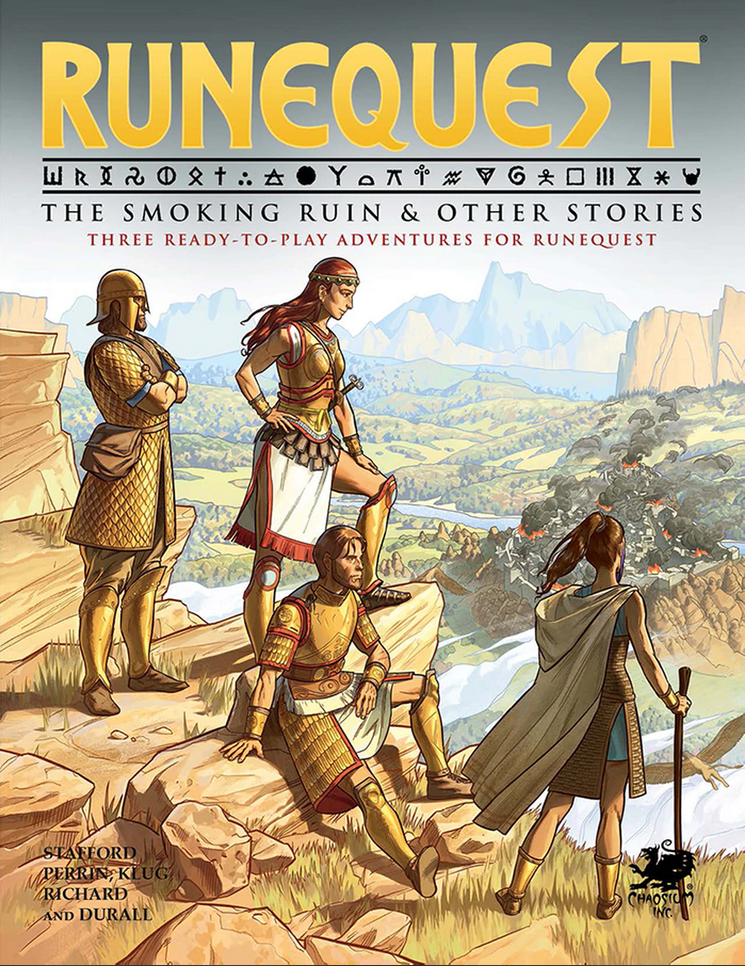
Skulldixon (which we interviewed here) has written an article about Urvantan’s Tower, one of the adventures from The Smoking Ruins and Other Stories. I always appreciate Skulldixon’s reviews because he usually writes them after having actually run the adventure and therefore sprinkles the text with his personal experience, actionable advice, and cautionary anecdotes.
It became clear that I needed to change how I made notes for these game sessions because my usual note-taking method wasn’t cutting it. This one big mistake caused issues for the players and changed how the game would have played out in the end. I had to course-corrected, and everything worked out in the end.
Shannon Appelcline’s Index
Shannon Appelcline (who was on the podcast for our episode on the Aldryami!) has updated his index of Gloranthan magazines. This is a good resource to see all the good out-of-print stuff you’re missing and will never have!
There are also other indexes for other game magazines here.
Watch Loic Muzy Draw a Bit of Zorak Zoran
Loic was having a bit of fun on Twitter, and it looks great!
Thank you for reading
That’s it for this week! Please contact us with any feedback, question, or news item we’ve missed!



The internal “monomyth” for King of Sartar must be rather recent, with the revised hardcover edition of the book released under the new owners of Chaosium, as there is no way Jeff had any hand in the production of the original softcover edition of 1992. The “one and only true timeline” for the kings of Tarsh was ignored in the new bits added then, continuing the undecisive dating of the softcover edition, or possibly including old Son of Sartar manuscripts misplaced when the softcover was compilated.
It’s probably impossible to say if any changes from the 2nd edition are actual “fixes” (such as using previously forgotten or lost material), or changes for adjusting the balance between “correct” and “incorrect” information as part of the narrative device… 😉